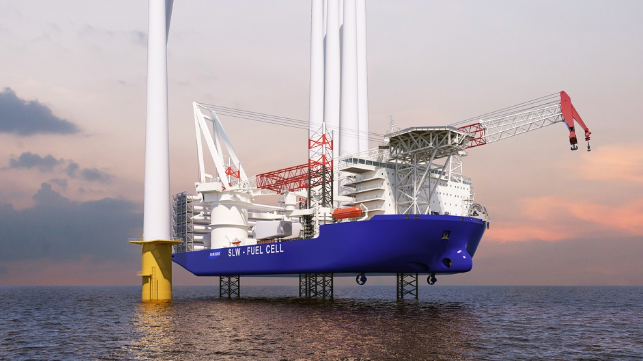SHI Unveils LNG Fuel Cell-Powered Wind Turbine Installation Vessel

Samsung Heavy Industries announced Thursday that it has received approval in principle from three classification societies for a new LNG-fueled, fuel cell-powered wind turbine installation vessel.
SHI's "ECO-WTIV" would use solid oxide fuel cells to split methane into its constituent parts - hydrodgen and carbon - and convert the hydrogen to electrical power. The carbon would be released as CO2, but due to the relatively high efficiency of a solid oxide fuel cell and the reduced carbon content of natural gas, SHI says that the vessel's overall GHG emissions would be about 50 percent lower than the emissions from an equivalent conventional vessel.
ABS, DNV and Lloyd’s Register have provided AiPs for the design, SHI said.
"As the offshore wind industry grows, which is one of the pillars of [South Korea's] Green New Deal Policy, there will be more demand for WTIVs. It is very meaningful now that we secured our independent model featuring diverse cutting-edge green technologies," said Wang K. Lee, VP of the Offshore Business Division of SHI.
Samsung Heavy Industries has built three WTIVs previously, including the first vessel ever built specifically for the purpose. The new design will also have a new jackup system, engineered in partnership with Hyosung Heavy Industries.
SHI's technology partner for fuel cell development is Bloom Energy, an established manufacturer of natural gas-powered SOFC units. Its first commercial devices shipped in 2008, and it has supplied its SOFC "energy servers" to 500 land-based sites over the intervening years.
